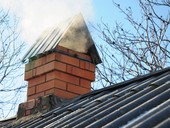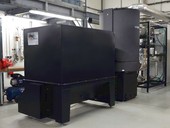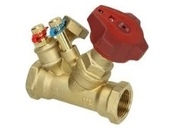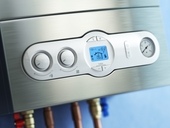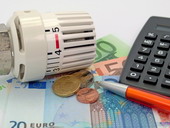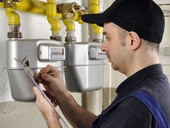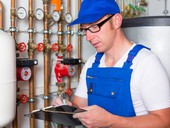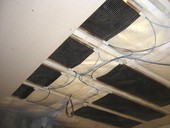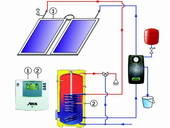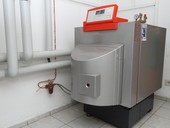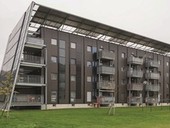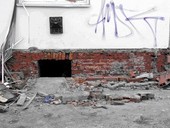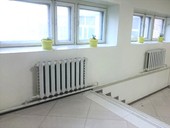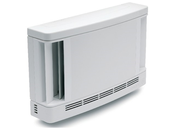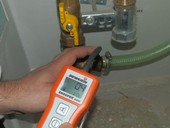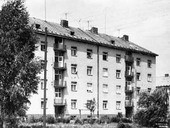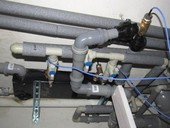Design and calculation of chimneys includes European standard EN 13384-1 Chimneys - Thermal and hydraulic calculation methods - Part 1: Individual chimneys and EN 13384-2 Chimneys - Thermal and hydraulic calculation methods - Part 2: Common chimneys
Archiv článků od 5.12.2016 do 22.2.2017
Paper describes selected effects of implementation of biomass microCHP generation in Czech legal conditions. Selected demonstration of biomass CHP is described and basic operational energy balances are presented. Comparison of microCHP and ordinary biomass boiler energy balance were performed. MicroCHP technology WAVE, which is being developed at CTU UCEEB in Buštěhrad, is described. Operational parameters of WAVE and future development outline were discussed.
Brief summaries of legislation in particular contain information about products with higher technical, technological and intelligent level, specifies requirements for installation and construction works, which require new measurement technology and represents a variant location measuring devices, especially in relation to other installation systems (electro).
The Ministry of Environment intends to publish the changes for the second round of grants for the replacement of boilers in March 2017. Prefer to be renewables, coal-fired boilers will have less support than before. Until now, the accepted 26,000 applications for grants, money is one-third depleted.
The paper presents an example of solving the propagation of noise from an air/water heat pump installed in the basement of an apartment building. Air intake and exhaust are brought out on the façade of the building, where it is calculated the noise situation in the protected exterior of the building. In the interior it is solved the propagation of sound from the plant room to the protected interior space. In conclusion, the results are compared with the data from the report on measurement at the realized work.
For more than a year, a nearly zero-energy standard has applied to certain buildings. In the Czech environment, specific technical parameters for such buildings have been known for three years. And for over six years, the Directive on energy performance of buildings has been in force, imposing the obligation upon EU member states to introduce this standard.
Nevertheless, it seems that for many experts, including those in the field of energy, this term is still quite unclear. Many imagine buildings coated with photovoltaic modules from the ground to the roof, buildings which are better than passive ones or buildings which are self-sufficient, i.e. completely independent of public energy networks. Given the fact that the concept of a nearly zero energy building is very distant from such notions, and because this standard will soon become obligatory for all buildings, including small family houses, let's have a look at what a nearly zero-energy building really is.
The article describes the impact of the contemporary and future legislative requirements for new buildings in terms of their conception and utilization of renewable resources. Soon, the requirement of quality standard is going to be effective in the Czech Republic that is called building with nearly zero energy consumption. That quality standard is defined at national level by legal regulations based on the requirement of European standard. On examples of family house, residential house and administration building, the impact of the to-be-established requirements for building conception is being demonstrated from the construction as well as the technical systems' point of view. With the existing development trend maintained it can be expected that a building with nearly zero energy consumption will have, comparing to an existing building, a better quality building shell, technical systems working with high efficiency and potentially may but needn't be, partially supplied by renewable energy resources.
Taking into account the experience and results of the investigation of certain events on the gas and associated facilities (fire, explosion, poisoning, fumes, prohibited manipulation, etc.) from the perspective of a forensic expert we have prepared material, which will be published on the continuation. Contents of this material is based on real cases. Material according to the extent of individual reported cases includes:
- A brief description of the event
- Principles of the investigation
- The findings at the crime scene
- Issues to be solved
- Findings and conclusions on the issues
- Measurements taken on the spot
- Results of expertise
- Conclusions
The purpose of the material is to highlight the potential risks when designing, installing, testing, inspecting, maintening and operating of gas and associated equipment and also to identify possible breaches of regulations and procedures in everyday practice.
Individual cases are accompanied by photographs, measurements and in some cases by used calculations.
The material will be regularly complemented by other practical cases.
Currently, it is common to design the heating system such as two-pipe. Automated computing programs contribute to this trend that other variants can not even rule. But for some buildings is single pipe system from the perspective of operation suitable and due to lower material intensity even better preferable. The author demonstrates this on specific example of a two-floor family house.
Taking into account the experience and results of the investigation of certain events on the gas and associated facilities (fire, explosion, poisoning, fumes, prohibited manipulation, etc.) from the perspective of a forensic expert we have prepared material, which will be published on the continuation. Contents of this material is based on real cases. Material according to the extent of individual reported cases includes:
- A brief description of the event
- Principles of the investigation
- The findings at the crime scene
- Issues to be solved
- Findings and conclusions on the issues
- Measurements taken on the spot
- Results of expertise
- Conclusions
The purpose of the material is to highlight the potential risks when designing, installing, testing, inspecting, maintening and operating of gas and associated equipment and also to identify possible breaches of regulations and procedures in everyday practice.
Individual cases are accompanied by photographs, measurements and in some cases by used calculations.
The material will be regularly complemented by other practical cases.
zpět na aktuální články
